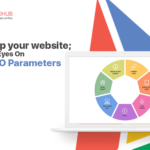What Replacing Universal Analytics In Google Analytics? All You Need To Know
Universal Analytics vs. Google Analytics: how are they different? As of July 1, 2023, Universal Analytics will stop working to make way for Google Analytics 4, the latest version of Google Analytics.
Table of Contents
What is Google Analytics?
Google Analytics is much more than a web analytics tool. Google Analytics is an online tool and platform developed by Google to measure and analyze what happens on a website or mobile application.
Used by millions of companies and webmasters around the world, it has a free version with more than enough functionality for most businesses and a more robust commercial version (Google Analytics 360) for large organizations.
The objective that was raised with this tool at the beginning was to complement other tools owned by Google such as Ads (formerly Google AdWords), Webmaster Tools (now Google Search Console), and AdSense (this has not changed its name at the moment), so that together some would support each other and all the data on the website would be centralized in Analytics.
What is UA (Universal Analytics)?
Universal Analytics (UA) is the analytics we call “traditional,” with which it has been working for many years.
What is GA-4 (Google Analytics)?
Google Analytics 4 has improved this quite a bit and now allows certain events to be measured automatically (the previous version Universal Analytics was more limited).
Thus, Google Analytics squeezes our website so that, with time, study and dedication, we can find out the failures and successes that occur on our website every day and solve them.
Universal Analytics vs. Google Analytics
The “new generation” of Google Analytics, called Google Analytics 4 (GA4), came out of its beta version on October 14, 2020. Although it will undoubtedly continue to improve and implement more features, it is already very operational.
What Differences Does GA4 Present About Its Predecessor?
Google Analytics is a web analytics tool used to collect and analyze the data provided by digital platforms. It allows access to exclusive statistics to boost the pages’ performance and achieve better results.
The latest version of Google Analytics is Universal Analytics. However, it will cease to exist to make way for Google Analytics 4 (GA4), which will be mandatory from July 1, 2023. Some brands have already started using it. According to the Built With the portal, 5,224,954 websites are already using it.
Here are some changes:
1. Data Models
The data measurement model is one of the most significant differences between Universal Analytics and Google Analytics 4. First, this was done based on the sessions and the number of page views. In the second, it will be done from the events. But, as long as both are active, it is possible to perform the data measurement analysis in both ways without any problem.
2. Tracking ID
The measurement ID is used to configure any tracking in Google Analytics 4 through GTM (Google Tag Manager). In Universal Analytics, by contrast, the Tracking ID is used. How to differentiate them? As follows:
- Measurement ID. It starts with the characters’ G-‘.
- Tracking ID. Start with ‘UA-.’
3. Reporting Interface
GA4 reports have changed drastically and can even be confusing, as data you were familiar with has been removed or replaced. As mentioned in previous paragraphs, GA4 focuses on events, while its last version focuses on sessions and the number of pages.
4. Cross-device & Cross-platform Tracking
In the case of Google Analytics 4, it adapts to any device and platform. That is, it works for web and mobile application analysis. By contrast, Universal Analytics is different.
5. Electronic Commerce
The tracking capabilities of GA4 e-commerce portals still need to be improved. The opposite happens with Universal Analytics. The functions that the tool has been more developed.
Finally, brands are advised to keep their Universal Analytics account while they learn and get used to the new Google Analytics 4. If the company is starting digital actions, it is recommended to begin with GA4.
The New Version Of Google Analytics
We can find a tracking code by accessing the Administrator section and, within it, the property whose monitoring we want to perform.
We can install the code manually on the web, use a tag manager such as Google Tag Manager or integrate it through a plugin or module if our Web platform allows it. However, depending on what we want to measure, we may need to implement additional code.
Google Updated Terms Of Service 2022
Google anticipated a fundamental change by releasing a beta version (in tests) of its new Google Analytics, which coexisted with traditional Google Analytics. This was a significant revolution since this version allowed a web and a mobile application to be measured simultaneously, unifying the data in a single property. This change also caused a total change in the interface, both in its data model and visually.
What Should We Need To Do Next?
Our recommendation is to evaluate first the need or not to use both versions to have all the follow-up already with GA4:
Keep it if you have been working with UA for a long time. But also start measuring with GA4 since the data there begins from scratch.
If you have just created your website and it is not an ecommerce, you can start working directly with GA4.
If you have just created your website and it is an Ecommerce, you may be interested in configuring tracking with both versions, or you may not even be able to use GA4 if you use a fast solution. The reason is that e-commerce monitoring is usually done with a module or plugin so as to avoid having to implement it manually throughout the portal (something quite complex), and right now, there are few options in this regard that they use GA4. However, we have already seen some solutions for WooCommerce and PrestaShop.
When And What’s Changing In Google Analytics
If you want to get the most out of your website or application, it is highly recommended that you use an analysis tool. Analytics is suitable for almost all projects, and although it is not the only solution, it seems to us the one that offers the best quality/price ratio.
It is also advisable to complement the Web analysis tool with another qualitative analysis tool. And remember, the tool is only an instrument for one purpose: to measure and obtain data to make correct business decisions. You will need someone who knows how to use it correctly or train you for it.
More Resources:
- What is Online Reputation Marketing? How Effective Is Your Online Reputation Management in 2023?
- How to Optimize Your Content for People and Search Engines
- Why Use WordPress? Top 10 Benefits & Advantages Of Using WordPress (Ultimate Guide 2022)
- How SEO and Content Marketing Work Together to Boost up Your Branding
- How Brand Reputation Can Be Impacted By Google SERP Selections
















No comments